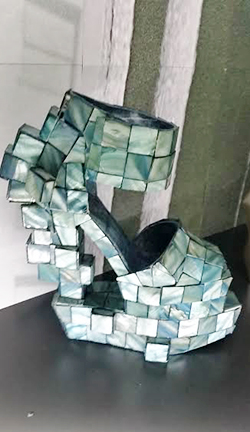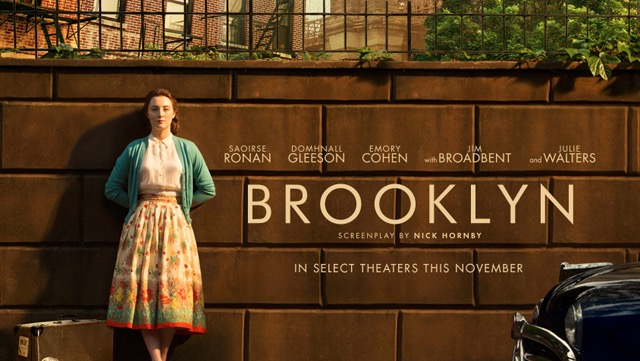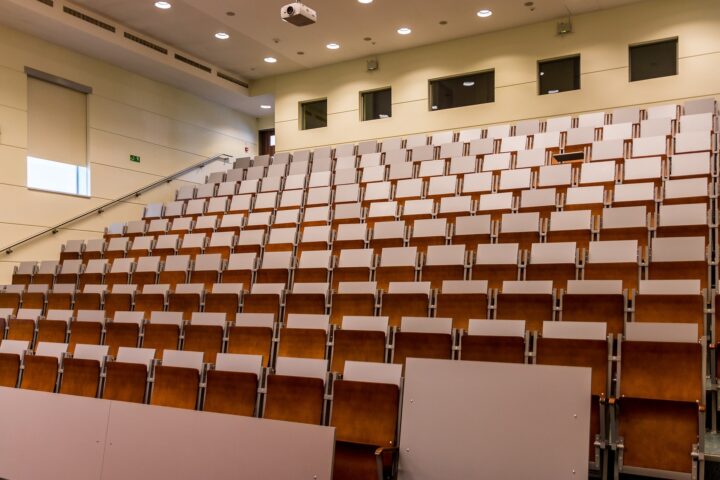
Mother of Pearl (2013), designed by Matilda Maroti and Petra Hogstrom from Swedish brand Shoise, is one of the many unique heels on display at The Brooklyn Mueseum.
A shoe lover’s dream is brought to life at The Brooklyn Museum’s “Killer Heels” exhibition. From the high platform Chopines of 16th century Italy to the glamorous stilettos on today’s runways, the exhibition looks at the high-heeled shoe’s diverse history and its lasting place in popular culture. “Killer Heels” explores fashion’s most alluring accessory.
Loved by some and despised by others, high heels are perhaps one of the most intriguing articles of fashion.
However, women were not the first to wear them. High heels were first worn in the West by aristocratic men at the end of the sixteenth century. Women quickly adapted the style and heels became essential to communicating power and prestige through dress.
By the 18th century, the high heel shifted from a symbol of class to a representation of gender. Heels were increasingly thought to embody female vanity and disappeared from mainstream men’s fashion.
The first room in the exhibition sheds light on the history of the high-heeled shoe. Chopines, the first elevated platform shoes, were made of decorated cork and wood that were fashionable in 15th and 16th century Italy. With some Chopines being as high as 20 inches, they were worn to keep women’s garments from touching the dirty streets.
Shoes with pointed toes and curved heels were fashionable for women in the 17th and 18th centuries. These shoes were up to five inches high and were made with brocaded or embroidered silks, wools, velvets and often embellished with jeweled buckles. This style, later referred to as the pump, was closely associated with luxury and aristocracy.
They also made a woman’s foot appear tiny and slender under the voluminous skirts popular during this era.
The next room in the exhibit plays with the concepts of glamour and fetish, focusing on the seductive power of the high heel. Many designers and manufacturers worked on developing high, thin heels which were in demand as early as the 1930s and 1940s. After World War II, protruding steel rod technology enabled high heels to reach new stable heights.
The stiletto is highlighted in this section as an iconic shoe symbolizing fantasy and eroticism. Designer houses such as Manolo Blahnik, Christian Louboutin and Alexander McQueen have played with the intrinsic silhouette of the stiletto by stripping the heel to showcase the internal weapon like steel rods or spikes. These are considered fetish style heels, which are extremely high, pointy, and often decorated with buttons, buckles and straps.
The relationship between the high heel and architecture is also showcased in the exhibition. Cantilever construction allows buildings to incorporate projecting elements that are anchored on only one side and therefore appear to float above the ground. Similarly, a leather pump from Marc Jacobs deliberately plays with this configuration by shifting the heel and making it an extension of the sole, giving the illusion that the heel of the foot is unsupported.
The last room of the exhibition is appropriately titled “The Space Walk.” Rows of glass encased, futuristic inspired shoes neatly displayed as if too exclusive to touch. These high heel designs feature aerodynamic lines, transparent, metallic and reflective surfaces. Other retro-futuristic designs appear to invoke machine parts and the mechanisms associated with robots and aliens.
The exit leading out of the exhibition really gets the viewer involved by inviting them to take a picture of their “killer heels” and to fill out a post it describing them. Some of the posts read “glamorous” “badass” and “so freaking cool.”
The Killer Heels exhibition is open to the public until February 2015.














